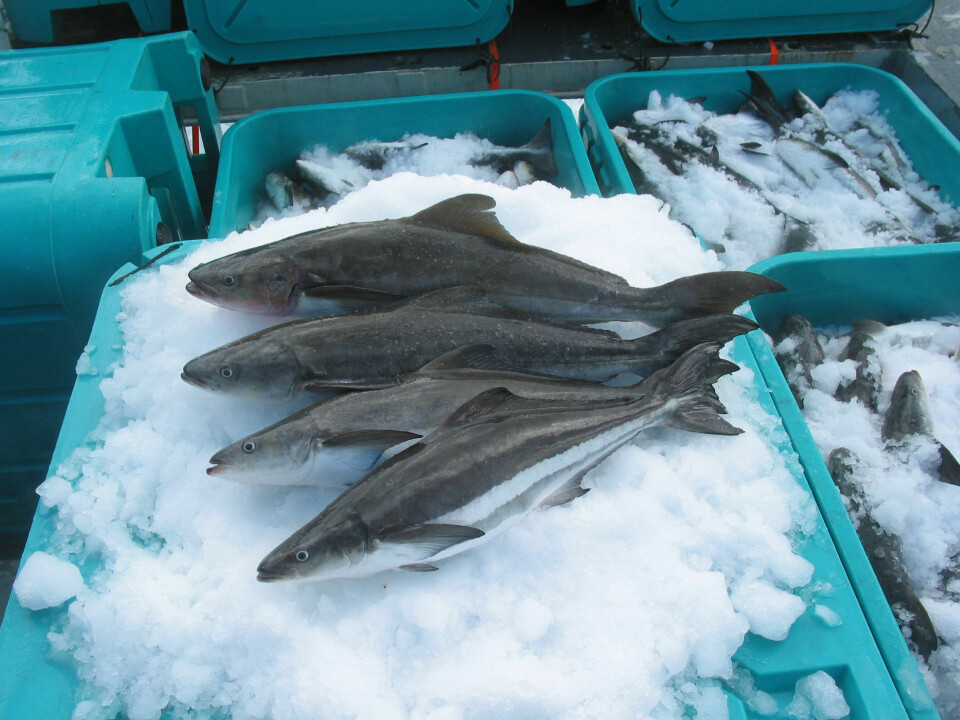
Submerged aquaculture project wins prize
The idea of using submersible cages to grow fish is not new, but it seldom creates headlines and even less often it garners matching funding from governments. But both of these things happened lately when Barbara Wooden won second place in the Business Plan Challenge Community Track, with a plan to grow cobia to a market size of 8 pounds (~3.6 kg) in eight months, and in cages submerged to 80 feet.
Nancy Dahlberg of The Miami Herald reports;
Overfishing is a serious threat to the global ecosystem, just as more protein is needed to feed the world’s hungry. At the same time, U.S. consumers are becoming more educated and demanding fish free of contaminates and mercury. Barbara Wooden says her aquaculture company, Agape Marine Ventures (AMV) of Delray Beach, addresses all these concerns. Her plan involves hatching fish from eggs in a hatchery, then growing them to maturity in huge cages — some the size of football fields — 80 feet below the ocean surface. “Raising fish was something I really wanted to do,” said Wooden, explaining why she decided to pursue the idea after returning to South Florida, where she grew up. “I was thinking about the state of world hunger. Fish are being overfished in our oceans. I was looking at research UM (University of Miami) was doing — growing fish in submersible cages, making the fish predator-proof, you could grow a lot at a time. You didn’t have to feed them antibiotics. You didn’t have to worry about mercury. It seemed ideal.”
Wooden, who spent 20 years in food service marketing all over the country as well as in Taiwan and the Philippines before returning to South Florida in 2005, spent some time with scientists such as Daniel Benetti at the University of Miami Rosenstiel School of Marine & Atmospheric Science, which has been developing and researching sustainable fish farming for years. “Sustainable aquaculture is the future of seafood production. Wild fishery stocks are being exploited at or above their maximum sustainable levels, yet demand for seafood continues to grow. There will be no other way to provide wholesome seafood for the human population in the decades to come,” said Benetti. “We appreciate her hard work and determination to make this project happen and are open to collaborating when the time comes and her project, Agape Marine Ventures, starts materializing.”
Agape, using environmentally sound methods, will begin by hatching and growing cobia. “It’s my money fish right now. With snapper and grouper, they take 12 to 18 months to get to plate size. Cobia will get up to 8 pounds in eight months,” Wooden said. Cobia are also ideal for cages, she said, because they are difficult to catch in quantity in the wild. They don’t swim in schools. “They are fast-growing, they are hearty, they are where tilapia was 10 or 12 years ago. They are indigenous to the waters of South Florida and the Caribbean.” Later, AMV plans to add snapper, grouper, mahi-mahi, pompano, lobster and tuna. Wooden also has worked with mentors at the Launch Pad, UM’s entrepreneurship career center, to develop her business. Wooden said Agape first plans to do an environmental impact study for the Bahamas and then will start putting cages in the ocean there, because of its “pristine” waters.
None of this is cheap. The impact study alone will cost $60,000 (~€46,000) to $100,000 (~€76,400), she said, and then there is infrastructure to build, including buildings and docks, cages to purchase, boats to buy, etc. Wooden estimates she will need $7.5 million (~€5.73 million), which will be matched by the government, and plans to finance her venture through both debt and equity investment. Judges saw a strong market opportunity in her plan and said her UM connections were a competitive advantage. But like most of the entrants, there’s work to do in presenting the financials. One judge suggested starting with unit economics around one cage and building the financial plan up from that.
AMV plans to start in the Bahamas, but if the United States loosens permit restrictions, “I have my eye on property in Key West,” Wooden said. The longer-term plan for the company is to be vertically integrated, with a processing plant and distribution to restaurants and stores. The National Oceanic and Atmospheric Administration estimates that 84 percent of the seafood consumed in the United States is now imported and half of that is produced through aquaculture. The aquaculture industry is quite robust in Asia and Latin America, but not in this country. “We in the U.S. have the most advanced aquaculture technologies at hand, yet the political, regulatory and environmental frameworks have been unfriendly to aquaculture development, to say the least,” Benetti said.
Wooden also sees a need to build this industry in America. In other countries, “we don’t know what conditions [the fish] are growing in and they are not always the cleanest environments. Our fish will be able to tell you the story from birth to the plate.”






















































